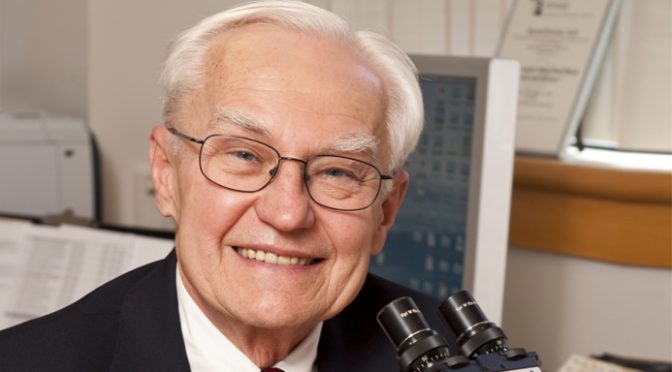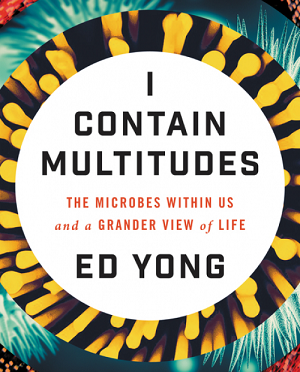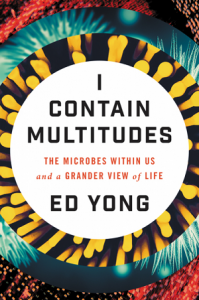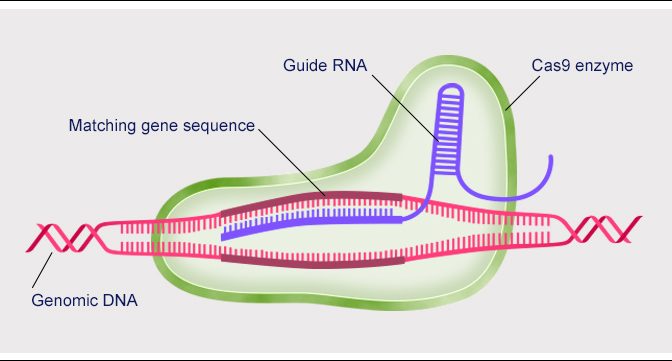|
Clinton |
Trump |
Johnson |
Stein |
| Innovation |
- Establishes education, especially in computer science, as foundational for improving national innovation
- Improve open access between government-funded scientists and private sector groups for “commercialization of research results”
|
- Reduce barriers for entry into free markets to allow entrepreneurs to flourish
- Emphasis on space exploration & “research & development across the broad landscape of academia”
|
- Reduce tax burden allowing more private investment in innovation
- Government should not pick winners and losers by imposing priorities
- Requests for Applications skew science towards “fashionable topics”
|
- Reduce Pentagon spending to free up dollars for innovation investment
- “Level playing field” with living wage and paid sick leave will lead to more innovation
|
| Research |
- Concerned about US “underinvestment in research”
- Improve funding for (1) young investigators and (2) “high risk high reward” and/or long-term projects
|
- Improve efforts towards sustaining “viable space program” and institutional research
|
- Government should get out of the way, allow scientists to determine regulations
- Private companies will invest in basic science research
- More transparency in funding to reduce waste
|
- Top priority is climate change
- Science policy should better reflect preferences and needs of citizens
|
| Climate Change |
- Acknowledges the severity of climate change and its consequences.
- Proposes 3-tiered plan to reduce fossil fuel dependence through technological advancement, increase investment and reliance on cleaner energy alternatives and cut energy waste.
- Also proposes to increase jobs in the clean energy sector.
- Launch $60 billion initiative to partner with local govts for cleaner energy alternatives.
|
- Believes climate change to be a hoax created by the Chinese, as evidenced by his speeches, and still refers to it in quotation marks.
- Believes that limited resources would be better spent in other avenues such as clean water and food production.
|
- Acknowledges the threat of climate change and the contribution of humans to it..
- Believes that market forces will be able to bring tangible reductions in carbon emissions rather than governmental regulations and international treaties.
|
- Believes climate change to be the “greatest existential threat that humanity has ever faced”.
- Proposes a “Green New Deal” which will create 20 million jobs and completely switch to clean energy sources by 2030.
- Also proposes to end subsidies to fossil fuel companies and phase out nuclear energy.
- Advocates for more investment in sustainable agriculture and infrastructure.
|
| Biodiversity |
- Emphasis on preventative approaches to protect at-risk species from becoming endangered
- International collaboration for research, information sharing, & conservation efforts
|
- Necessary to move away from “special interests” controlling decisions about federal land
|
- Innovation, free trade, and prosperity will enable better environmental protection
- Private ownership of land leads to better stewardship
|
- Ban pesticides that threaten pollinators
- Invest in clean air and water, zero-waste manufacturing processes, and sustainable agricultural practices
|
| Internet |
- Advocates internet to be kept as “a space for free exchange, providing all people equal access to knowledge and ideas.”
- Proposes to build on Obama administration’s “Cybersecurity National Action Plan” and put in place a Chief Information Security Officer.
- Cyber attacks to be treated just as any other attack and will be responded with serious political, economic and military approaches.
|
- Believes that the govt should not “spy on its citizens”.
- Any attack on the Internet deemed to require “utmost protection”, and a “proportional response” to “eliminate any threat to internet infrastructure”.
|
- Advocates for protection of user privacy and encryption.
- Wants to scale back National Security Agency’s role to provide cyber defense rather than being on the offensive.
- Proposes more education on cyber security.
|
- Propose to keep the internet free by supporting public broadband, supporting net neutrality laws, negotiate international treaties to ban cyber attacks with the UN’s help.
- Opposes the “Online Piracy Act” and other legislation that would “undermine freedom and equality on the internet”.
|
| Mental Health |
- Implement changes to health care system so that mental health & physical health are considered and treated in tandem
- Improve awareness and training of medical & other professionals in mental health areas
|
- Increase federal support to states to improve treatment options
- Recognizes that “a comprehensive solution set must be developed”
|
- Delivery of treatment is the key challenge, and state solutions are better than federal ones
- Drug war prevents treatment by criminalizing drug abusers
|
- Implement Medicare for All, including mental health care, Supplemental Security Income for mentally ill, and public education on mental illness
- Provide rehabilitation services for mentally ill prisoners
|
| Energy |
- Proposes a “smart energy policy” that will be at the intersection of economy, environment and security concerns.
- Advocates for more usage of cleaner energy sources, with a short term focus on solar power.
- Also wants to discourage fossil fuel dependence by cutting subsidies, investing more in clean energy technology and infrastructure.
*Also see “Climate Change” answer for more details. |
- Believes achieving “energy independence as soon as possible” as the goal of the US govt and American people.
- Proposes said goal can be achieved by “exploring” all possible energy sources.
- Also believes that the market will determine the best sources of energy for consumers.
|
- Government interferes with proper acquisition and use of energy
- Nuclear power is underused and overregulated
- Market will dictate use of renewable energy sources
|
- Rapidly transition to 100% clean energy
- End fracking, offshore oil drilling, and nuclear power by pulling subsidies
|
| Education |
- Committed to implementing improved computer science education at the primary, secondary, and collegiate levels to meet current job market needs, especially in underrepresented populations
|
- Education models need to be changed as “one size fits all” does not work and thus should be determined at the local or state versus federal level
- Will “allow market influences” to improve education
|
- Federal standards are unnecessary and counter-productive
- Rely on competition among states to incentivize high academic achievement
|
- Pre-school through university should be “tuition-free and world-class”
- Replace Common Core based on input from educators, parents, and communities
- Increase federal funding of public schools
|
| Public Health |
- Establish consistent budgeting for rapid responses to public health crises
- Expand training programs as well as available resources to current government divisions
|
- Resources are limited and thus assessment of areas with most need is required
|
- Federal government’s role should be limited to “superbugs” and epidemics that cross state lines
|
- Health data should be shared, not proprietary, to better monitor trends
- Save money through a more preventative approach to public health
|
| Water |
- Wants to work with both public and private sector to provide clean, safe water and improve water treatment technology.
- Proposes to build a multi-agency “Western Water Partnership” to improve access to clean water.
- Also proposes a “Water Innovation Lab” to develop novel technology for better water resource management.
|
- Acknowledges the crisis and proposes to invest in infrastructure development to provide clean water to everyone.
- Proposes increased desalinization approach and better infrastructure to meet the demands of clean water.
|
- Failure to protect water supply as in Flint, MI is criminal
- Federal government should step in when local and state officials fail or engage in misconduct
|
- Investing in infrastructure will ensure clean water and prevent future crises
|
| Nuclear Power |
- Fund research for advances in nuclear power
- Reduce amount of weapons-grade nuclear material globally
|
- Continue to rely on nuclear power as important part of energy independence
|
- Maintain robust safety and security standards, and continue using nuclear power
- Invest in newer, safer, less wasteful types of reactors
|
- End nuclear power subsidies, and phase out nuclear power completely by 2027
|
| Food |
- Proposes to increase investment in sustainable agricultural practices through the “Beginning Farmer and Rancher Development”.
- Proposes to invest more in rural business through “Rural Business Investment Companies” that would drive growth and jobs in rural areas.
|
- Believes that the market forces should be able to provide the agriculture industry with the best solutions.
- However, also believes that food availability is a
“national security issue” and therefore federal govt should be involved to provide a safety net for farmers.
|
- Federal management of agricultural, including subsidies, has created imbalances
|
- Label GMOs and regulate to make sure they are safe
- Support regenerative agriculture and sustainability
|
| Global Challenges |
- Proposes to appoint US’ first “Special Envoy for Climate Change” and lead the world in responding to climate change. Also proposes to build a global “Climate and Clean Air Coalition” on an international level and make climate change a major diplomacy issue.
- Also proposes to build a “Rapid Response Fund” to respond to national and international crises.
|
- Wants to make sure that the US is experiencing economic growth due to his belief that “a prosperous America is a much better partner in tackling global problems”.
|
- Use diplomacy and trade to engage with the world and solve global problems
|
- International institutions should be strengthened to tackle climate change and pandemic disease
|
| Regulations |
- Employ environmental, health, and energy regulations that “use the best available science”
|
- Keep, rescind, or add regulations based on science
- Balance economy with protection of citizens
|
- Federal regulations should be reduced wherever possible
- Patients in extremis should be free to use experimental medicine
- FDA should be used more for informing the public about risk and less for regulating therapies
|
- Rely on science advisors to formulate regulations
|
| Vaccination |
- Globally eliminate childhood diseases through vaccination
- Educate parents about dangers of not vaccinating their children
- Bridge “innovation gap” between research and production of new vaccines
|
- Invest in comprehensive vaccination program as a public service
|
- Federal government should assist in the event of national or regional outbreak
- Engage with partner countries to combat international outbreaks
|
- Universal health care needed to ensure everyone has access to critical vaccines
- Increase public trust in regulatory agencies by removing corporate influence
|
| Space |
- Wants to build on current progress in US’ space exploration by ensuring funding for NASA’s programs.
|
- Supports a “strong space program” from employment and educational perspectives.
- Propose to work on a global scale to expand space exploration.
|
- Space exploration should be encouraged in the private sector
|
- Lead international collaboration to ensure that space technology benefits all people
- Sign International Treaty for the Demilitarization of Space
- Leave space exploration and research agenda up to scientists, not military or corporations
|
| Opioids |
- Proposes a $10 billion initiative to fight the opioid epidemic by expanding the “Substance Abuse and Treatment block grant” and other federal-state partner programs.
- Recommends “rehabilitation and treatment over prison for low-level and non-violent offenders”.
|
- Wants to “stop the inflow of opioids” into the US.
|
- Drug laws and “crony capitalism” of legal opioid sales have largely driven the opioid addiction crisis
- Decriminalize and reschedule drugs, particularly cannabis
|
- End the war on drugs and focus instead on research, education, and treatment
|
| Ocean Health |
- Proposes to “oppose efforts in Congress that seek to weaken” established regulations on overfishing. Also wants to “act globally to address the fisheries crisis” and proposes better tracking of seafood sources.
- Also wants to protect coastal habitats and coral reefs.
|
- No mention of oceans, fishing, coral reefs or coastal habitats in answer.
|
- Focus on protecting our own coastlines and territorial waters
- Ocean pollution and over-harvesting will depend on international agreements and market forces
|
- As part of total climate change response, conserve fish stocks and coral reefs “with or without Congress” (i.e. through executive action)
|
| Immigration |
- Proposes to “staple” a green card to Master’s and PhD degree holders in STEM fields.
- Proposes to support “start-up visas” for tech entrepreneurs from abroad to invest in the US.
- Wants to streamline immigration process for “lawful residents” for easier naturalization, as mentioned in her comprehensive immigration reform.
|
- Rebukes the tech companies for abusing the H1-B visa program.
- Endorses “legal” individuals for extended stay in the US after achieving their degrees, however, was unclear on which status they would fall under.
|
- Believes that a “robust” H1-B visa program will increase growth, innovation and wealth.
- Wants market forces to determine immigration of labour and would streamline the immigration process for all labor types and skills.
|
- Supports the H1-B visa program, and believes immigration issues should be studied within a global economic context.
- Supports more “international development and demilitarization”.
- No specific comments on “scientists and engineers who receive their graduate degree at American Universities.”
|
| Scientific Integrity |
- Supports open access to government-funded findings through implementation of incentives for scientists to “share data, code & research results”
- Invested in bolstering public trust in scientific findings, preserving non-partisan nature of science research, and maintaining penalties for fraud & dishonesty
|
- Committed to eliminating political bias in research as “science is science and facts are facts”
. |
- Increase transparency to reduce influence of political interference on scientific integrity
- Respect diversity of thought in research centers
|
- American public distrusts scientific regulatory agencies because of corrupting influence of pharmaceutical corporations
- Stop the “revolving door” between political and corporate positions, and “clean up” regulatory agencies to improve public trust in science
|









